Fairfield, Marion County, Oregon
Fairfield refers to a community, post office, steamship landing and voting/census precinct located northwest of St. Louis, Marion, Oregon.
The 1878 Atlas of Marion and Linn Counties describes Fairfield as:
Located on the high land on the bank of the Willamette River, eight miles west of Woodburn, and is distant about sixteen miles from Salem. There are extensive warehouses for the storage and shipment of grain, and a store which does an extensive business with the surrounding country. Steamboats have little difficulty reaching this point at ordinary stages of water.
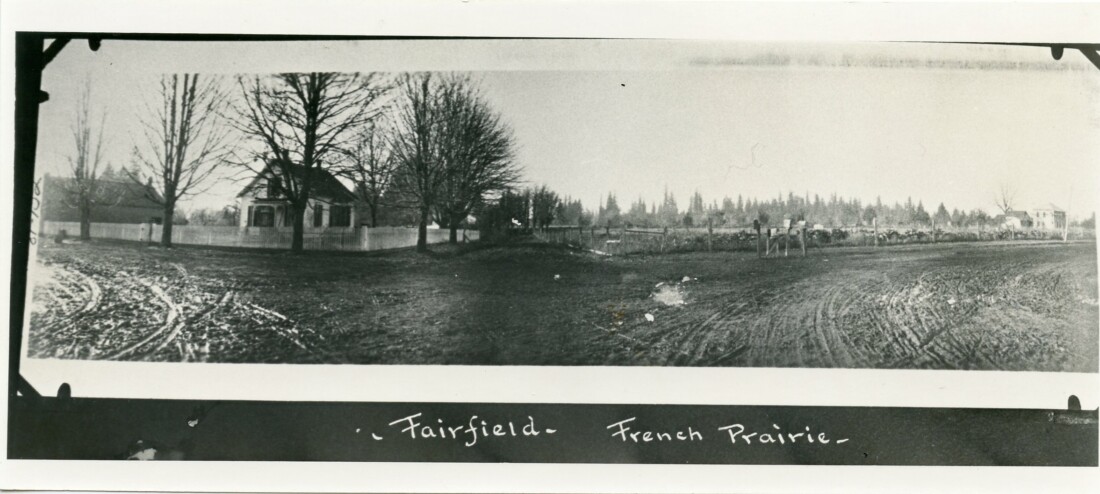
Fairfield, Oregon on French Prairie. Al Jones Collection, Willamette Heritage Center 2007.001.1672
Fairfield Interesting Spot
This article was written by Ben Maxwell and published in Marion County Historical Society’s publication Marion County History Volume 1, 1955 pp 9-11
Fairfield, a Marion County grain port of the 1850’s and 1860’s is now just another ghost town. Little remains of the original settlement, and, in view of the housing shortage, it may be believed that the ghost will soon seek residence elsewhere.
IN 1836, Dr. John McLoughlin, Hudson’s Bay factor, perceived the spiritual needs of a few retired employees, living on what later came to be called French Prairie. With his support they constructed a small, crud, log church on what at least one authority asserts was the sire of Fairfield of later times. Three years elapsed before the promised priest, Father Blanchet, vicar general, arrived. Then on January 6, 1839, this little church was blessed at the Feast of Epiphany and placed under the patronage of St. Pau. Here in this primitive log edifice, the first Catholic church south of the Columbia, west of the Rocky Mountains and north of California, a mass was held for the first time. After a brief usage it was determined that Fairfield church was not properly located and the center for worship was transferred to St. Paul.
Even so, the first Catholic church in the northwest endured at Fairfield for many decades. D. B. DuRette who, like his father, F.R. DuRette, was born and reared at Fairfield, recalls that the little old church of logs was standing after 1900 and was used by William Hager, Fairfield merchant, as a storage facility. Eventually the structure collapsed for want of care, and now only the excavation on the river bank at the confluence of the Willamette River and Fairfield slough indicates the site. There is no marker.
Fairfield, townsite, sixteen miles north of Salem, is located on a land claim acquired by J. C. Peebles in 1851. Peebles was a distinguished person in early Marion County history. He served in the territorial legislature and was a member of the constitutional convention. IN the 1860’s he was State Librarian and also Marion County Judge. When a post office was established at Fairfield March 24, 1852, J.C. Peebles was named first postmaster.
S.D. Snowden, surveyor and engineer, made a plat of Fairfield during October 1865. The town was shown as consisting of eight blocks of eight lots each. There were two named streets, Lincoln running east and west, and Baker north and south. In addition there were four unnamed streets, each sixty feet in width. Fairfield stores, a saloon, a blacksmith shop and a cooperage were all located near the intersection of Lincoln and Baker streets. Snowden’s plat did not reach the Marion County Recorder until 1892.
Ben Simpson, father of Sam, the poet, called French Prairie the “granary of Oregon.” That was in March, 1853, when Ben advertised in Bush’s Salem Weekly Oregon Statesman that he had just completed a new and commodious warehouse at Fairfield and was prepared to attend to all the business along that line. He also mentioned that his warehouse had a supply of dry goods and groceries for sale cheap.
Along with forwarding and commission business Simpson ventured into transportation. On Fairfield slough, perhaps within sight and hearing of Oregon’s first Catholic church, he had constructed the steamboat, Oregon. This craft, on hundred twenty feet long and described by Simpson, its manager, as “elegant, fast-running and commodious” was designed for upper Willamette transportation, even to Syracuse on the Santiam.
For some reason not recalled, Ben’s steamboat was unprofitable and when this fast and elegant craft cracked up in Kaiser rapids a few miles north of Salem, owners were thankful to be rid of the lemon. Soon thereafter Simpson withdrew from Fairfield and went to Fort Yamhill where he was proprietor fo a sutler’s store.
Ben’s warehouse, it may be believed, was the “old Isaac Mitchell warehouse” recorded on Snowden’s plat in 1865. More than thirty years later a brush fire ignited its tinder-dry construction and Fairfield’s first storage made a brief but spectacular fire.
J.C. Waldo and Company was not daunted by Ben Simpson’s apparent monopoly of Fairfield’s business. During the summer of 1853 they, too, were completing a substantial and commodious tow-story warehouse, “placed above high water where they will always be found ready to attend to business pertaining to forwarding and commission.” They, too, kept on hand goods and groceries to accommodate customers.
F.R. DuRette was born in Fairfield in 1860. Shortly before his death he prepared a Fairfield memoir published in the Gervais Star, March 28, 1930. Mr. DuRette recalled that Green C. Davidson built Fairfield’s first store in 1856. This twenty by forty feet structure with hewed sills and pole rafters once stood near the intersection of Baker and Lincoln streets. Decades later it served as Fairfield Grange hall. Today it is about a quarter of a mile removed from its original site and it is used as a storage room on the farm of his son, D.B. DuRette.
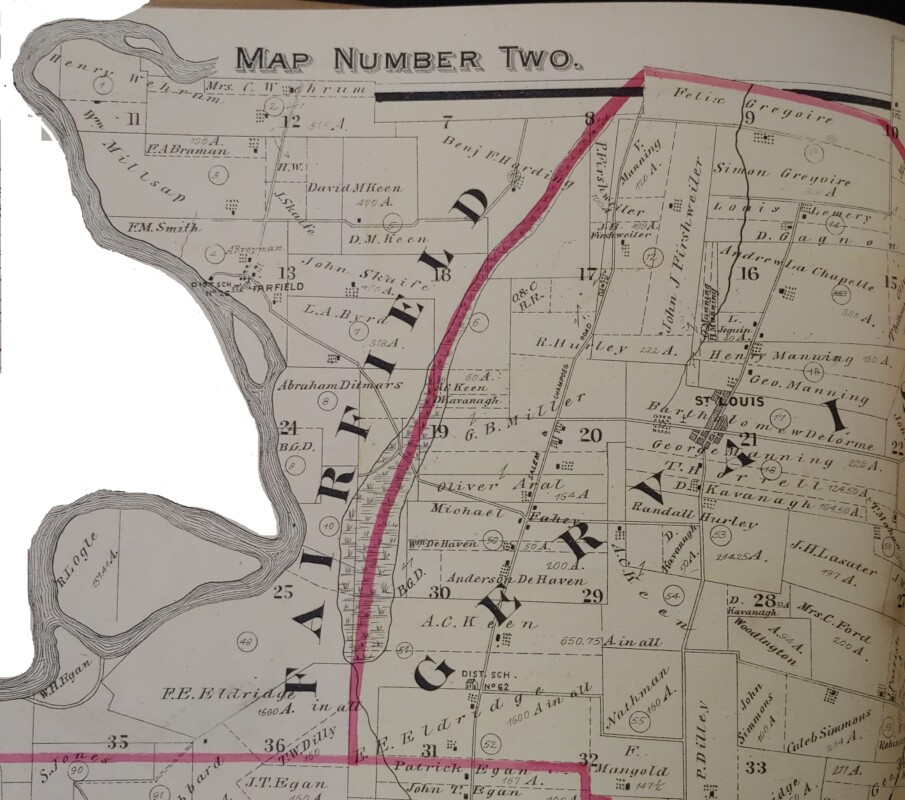
1878 Atlas of Marion and Linn Counties. Willamette Heritage Center Collections 2015.019.0001
Across Baker street and facing east was Fairfield saloon. After 1878 it was occupied by William Hager, the merchant. Today it is the home of Mrs. L. Partsch, somewhat remodeled but still standing on its original site. Not distant from the saloon was a cooperage and blacksmith shop.
E.A. Breyman, who arrived about this time, built Fairfield’s second store. This was a two*story structure with an upstairs loft, later used as a community hall. Just then Fairfield looked so promising that I. M. Lawrence decided to open a third store. After an interval the DuRette memoir relates, Davidson went brock and Lawrence saw fit to sell out to Breyman, who remained as Fairfield’s sole merchant. Breyman flourished and soon had a third Fairfield warehouse under construction.
About 1872, William Hager, a young Swiss, started clerking in Breyman’s store. Less than ten years later he owned the enterprise and inherited the postmastership. He continued as postmaster until the office was withdrawn December 22, 1902. Hager continued as manager of Fairfield store until the time of his death in 1908. Thereafter it passed through a number of hands until overtaken by disaster. In 1916, when Reuben Short was proprietor, someone candling eggs was careless with fire. Thereafter Fairfield had no store.
It was about this time, D.B. DuRette recalls, that his father dismantled Fairfield’s remining warehouses for materials needed to construct a dam in a logging operation. Lawrences’ store building, he recalls was likewise dismantled for salvage, but somewhat earlier.
Mrs. L.H. McMahan, daughter of L.A. Byrd, pioneer of 1846 and resident of Fairfield after 1852, recalls that a hotel once serving this community was a large, white building. It was moved to her father’s farm after patronage failed. There it was used as a residence until dismantled. Mrs. McMahan, whose sister Cordelia, married William Hager, the Fairfield merchant, possesses the large and attractive clock that marked time in the Fairfield store for decades.
Fairfield school, landmark of 1858, was suspended in 1948 because the building was considered unsafe. Then, after ninety years of usage, it appears to have bene the oldest operative public school in Oregon. During that long career this schoolhouse occupied three different sites.
E.A. Breyman provided the site and community effort built Fairfield church. Reverend D.M. Keene, long pastor, donated his labor as carpenter. This edifice erected in 1872 was dismantled several years ago.
French-Canadian settlers on French Prairie were traditionally a migratory, fur hunting people. Farming did not appeal to them. Immigrants more shrewd and foresighted than they acquired their claims cheaply and founded great estates devoted to grain production.
Oswald West, former Governor of Oregon, in a Capital Journal story for August 9, 1940, mentions Freeman E. Eldriedge, pioneer of 1847. Eldriedge purchased the Joseph Gervais claim of 642 acres in 1850. Then he acquired 643 acres from Xavier Ladiroute and ultimately expanded his holdings to 2000 acres. Here he produced as many as 40,000 bushels of grain in a favorable season.
Not all pioneers, however, sold out to the land barons. Heirs of L.A. Byrd still retain a sizable part of his original 320 acres. Descendants of J.N. Skaife, pioneer of 1853, still own some part of their patrimony. Heirs of Abram Ditmar still reside on their estate in the community. Soms of M.W. Mahoney, last to operate Fairfield warehouse, still live on the parental farm. D. B. DuRette still occupies premises acquired by his grandfather.
Although it is not clear for all to see, Fairfield’s prosperity was ebbing in 1870. By then better roads for hauling grain had been constructed to larger more interesting towns. Gervais, a new station of the recently constructed Oregon and California railroad, was rapidly becoming a rail-head for much freight formerly shipped by boat from Fairfield. In 1860 Fairfield precinct had a population of 822 and a decade later it was 613. In 1880 the decline was obvious. By then the population for the undefined Fairfield area was 50. Census for 1910 gave this community a population of 26.
Construction of the Oregon Electric railroad and the movement for good roads adaptable to truck transportation were Fairfield’s finale. On March 5, 1939, sole owners of what had once been the town of Fairfield petitioned for vacation of the town plat. Then the curtain dropped for the last time on the local and somewhat obscure drama that had its beginning in earliest pioneer times.
Fairfield Cemetery
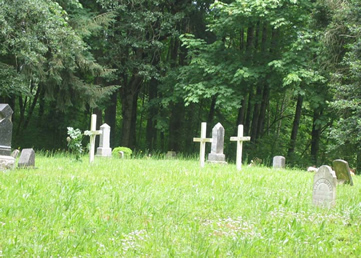 For more information about the Fairfield Cemetery and to search for burials, visit the Marion County Cemeteries website here.
For more information about the Fairfield Cemetery and to search for burials, visit the Marion County Cemeteries website here.
Publications
- Corning, Howard McKinley. Willamette Landings. Portland: Oregon Historical Society, 2004 (third edition). (WHC Collections L 2005-0040)
- Marion County History Vol. XII – mentions Fairfield Cemetery. (WHC Collections X2011.1.0070)
- Maxwell, Ben “Fairfield Interesting Spot” Marion County History Marion County Historical Society Vol. 1 1955 WHC Collections L 2005-0043 * note transcribed above.
- MacDonald, Joseph F. Stage Coaches and Stations: Western Oregon 1850-1920 Lake Oswego: Western Places, 2010 (WHC Collections 2011.010.0001)
- Stewart, Gil. Hidden History of the Central Willamette Valley Aumsville: October Years Press, 2014 (WHC Collections 2015.031.0001)
- Conn, Frank Daniel John R. Magness Brookings: Chetco West Books, 2021 (WHC Collections 2021.042.0001)
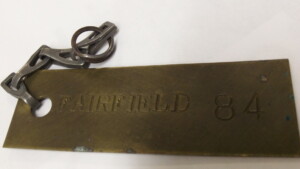
Election box tag for Fairfield, Oregon. Willamette Heritage Center Collections 2013.016.0002
Digital Resources
Materials not housed at the Willamette Heritage Center
- Plat map of Fairfield recorded in 1892 with Marion County. Access via: Marion County Surveyor’s Graphic Index.
- Survey done in 1852 of area. Access via: Bureau of Land Management’s Government Land Office Records.
WHC Collections
Archives:
- Binder: Excerpts from Histories. WHC Collections 0082.042.0004.001
- Oregon Oddities Publications. WHC Collections 2009.063.0001
- Notebook: Ghost Towns in Marion and Polk County compiled by Ronald J. English. WHC Collections 2009.092.0001
- Record of Teacher’s Contracts for Marion County School Districts 1908-1905. WHC Collections 2008.066.0001
- Ellen Savage Goodenough Scrapbook WHC Collections 2023.007.0052
Photos:
- Portrait of Lorenzo Austin Byrd (born in Fairfield) (WHC Collections 1992.005.0163)
- Fairfield. WHC Collections 2006.064.0301.055
- Fairfield – French Prairie. WHC Collections 2007.001.1672*
Maps:
- 1878 – Map of Marion and Linn Counties (WHC Collections 2015.019.0001) *portion digitized above.
- 1927 Metskers Map of Marion County -1984.019.0001.001
- 1957 USGS Survey Map Dayton Quadrangle – 2002.021.0003
- 1957-1985 USGS Survey Map Gervais Quad – 1994.058.0002
- 1963c. State Parks and Recreation French Praire Tour Map 2007.027.0033 mentions Fairfield Grange
- 1981 Aerial Photo of Fairfield and North half of Grand Island -2013.037.0002.010-011
- Map of Marion County Post Offices X2013.001.0007
Newspapers
- The Gervais Star Vol XXIX No. 41 for March 28, 1930 WHC Collections X2012.002.0003
- Champoeg Pioneer July 1956 WHC Collections 2010.035.0005



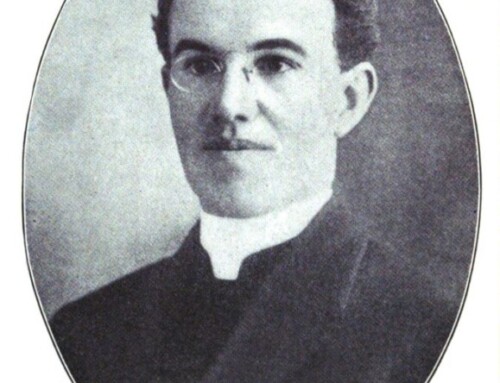
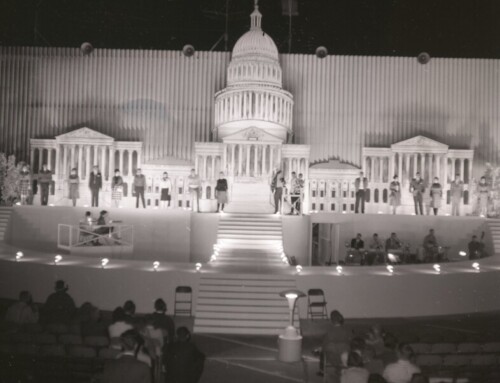
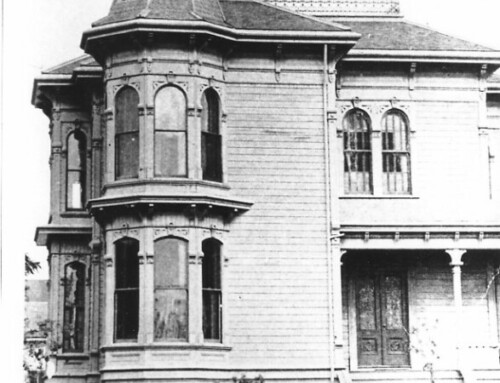
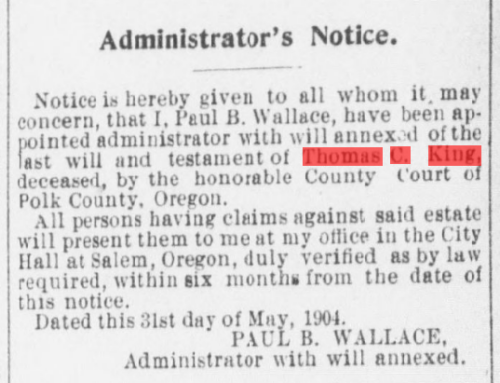
My family farm is in fairfield though long sold after my grandmother died. Most members are buried in Fairfield cemetery
Hello,
Our great great Grandparents’ house still stands. They donated land for that Cemetery, but moved to Salem, where they are buried.
the Byrds and Alberts
My mother and her siblings were born in the Byrd house which is still standing along with the house that both grandparents owned and the house I grew up in which is 113 yrs old!
We are maybe cousins.
The house was built by our Great Great Grandparents Martha and Lorenzo, land donated for the cemetery by them.
Which house are you mentioning?